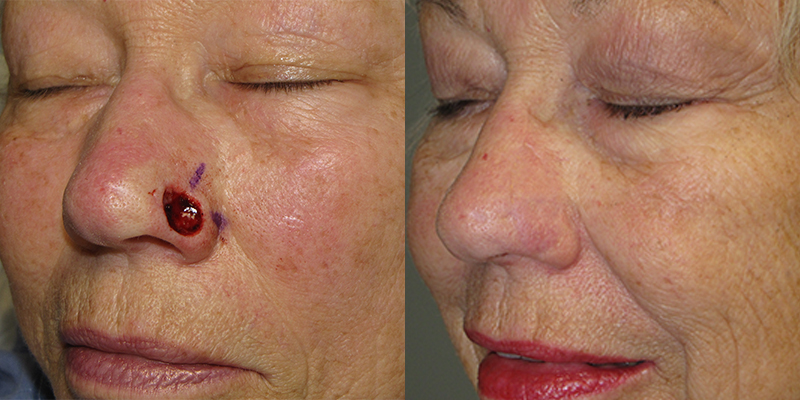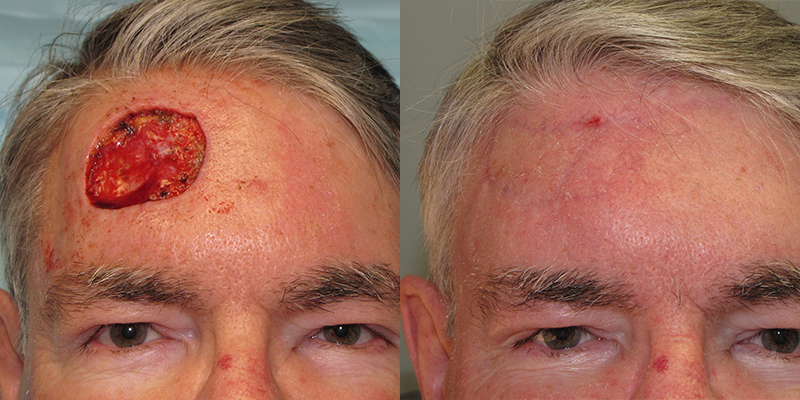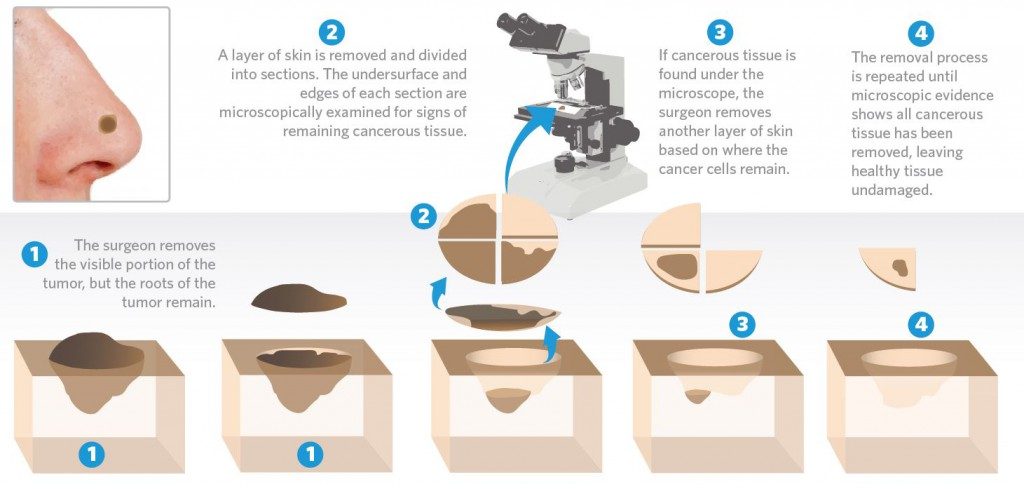Mohs Surgery
Mohs micrographic surgery is considered the most effective technique for treating many basal cell carcinomas (BCCs) and squamous cell carcinomas (SCCs), the two most common types of skin cancer. The procedure is done in stages, including lab work, while the patient waits. This allows the removal of all cancerous cells for the highest cure rate while sparing healthy tissue and leaving the smallest possible scar.
What Happens During Mohs Surgery?
The procedure is done in stages, all in one visit, while the patient waits between each stage. After removing a layer of tissue, the surgeon examines it under a microscope in an on-site lab. If any cancer cells remain, the surgeon knows the exact area where they are and removes another layer of tissue from that precise location, while sparing as much healthy tissue as possible. The doctor repeats this process until no cancer cells remain.
Is Mohs Surgery Right for me?
Mohs surgery is the gold standard for treating many basal cell carcinomas (BCCs) and squamous cell carcinomas (SCCs), including those in cosmetically and functionally important areas around the eyes, nose, lips, ears, scalp, fingers, toes or genitals. Mohs is also recommended for BCCs or SCCs that are large, aggressive or growing rapidly, that have indistinct edges, or have recurred after previous treatment. Some surgeons are also successfully using Mohs surgery on certain cases of melanoma.


Advantages of Mohs Surgery
Efficient, cost-effective treatment:
• Single-visit outpatient surgery
• Local anesthesia
• Lab work done on-site
Precise results:
• Physician examines 100% of tumor margins
• Spares healthy tissue
• Leaves the smallest scar possible
The highest cure rate:
• Up to 99% for a skin cancer that has not been treated before
• Up to 94% for a skin cancer that has recurred after previous treatment
Options for Reconstruction
While your surgeon might be able to give you an idea of whether your reconstruction should take place immediately after surgery or be delayed until later, it's impossible to know the extent of the cancer in advance.
After determining that the affected area is cancer free and reconstruction is necessary, the Mohs surgeon will review skin cancer reconstructive surgery options with you. Depending on the size of the tumor, depth of roots, and location, one of the following options will be selected:
- Small, simple wounds may be allowed to heal by themselves (process known as secondary-intention healing)
- Slightly larger wounds may be closed with stitches in a side-to-side fashion
- Larger or more complicated wounds may require a skin graft from another area of the body or a flap, which closes the defect with skin adjacent to the wound
- The patient may be referred to another reconstructive surgical specialist
Post-Operative Management
Your surgeon will arrange post-surgical check-ups after Mohs surgery to monitor your recovery and spot any possible cancer recurrence as soon as possible. Since 2 out of 5 patients with one skin cancer will develop another within 5 years, follow-up is extremely important for early detection of any new lesions.
Learn more about Mohs Micrographic Surgery.
Stay up to date
Receive research updates, inspiring stories, healthy living tips and more.
WHY CHOOSE SCARS CENTER?
SCARS Center is home to some of the most widely respected dermatologists and plastic and reconstructive surgeons in Orange County.
FOLLOW US
STAY UP TO DATE
Receive research updates, inspiring stories, healthy living tips and more.
Orange County's Premiere Skin Cancer Treatment Center


